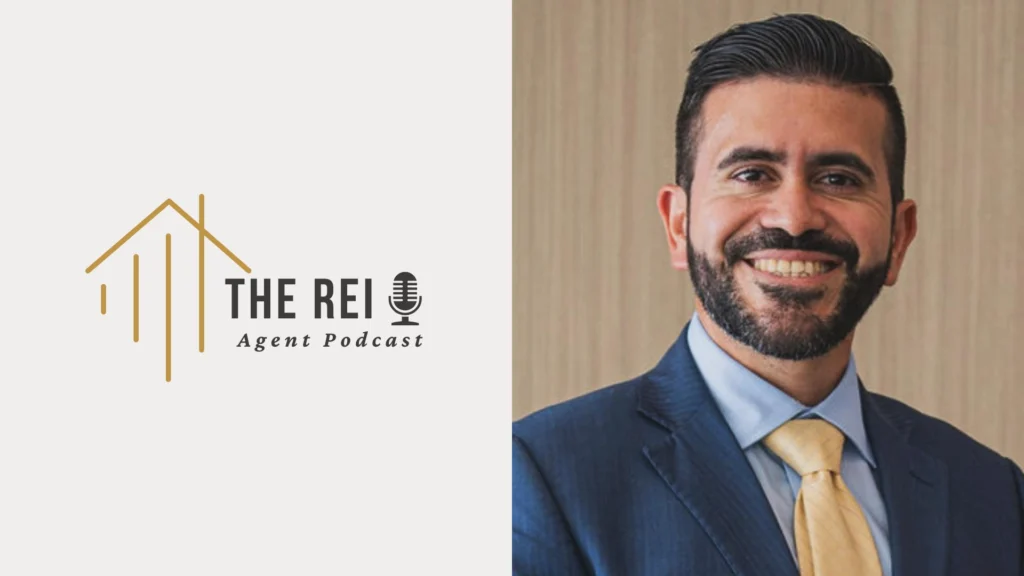Introduction: Unveiling the Secret Recipe for Cash Flow Success
You might think there's no hidden formula for cash flow success, but what if I told you that few investors truly grasp the full potential of financial literacy combined with strategic diversification?
By harnessing the power of reliable income streams like real estate and dividend stocks, and staying ahead of market trends, you can craft a resilient portfolio.
Yet, it's not just about where you invest; it's about understanding the nuances of risk management and tax advantages.
What are the overlooked strategies that can transform your financial stability and elevate your investment game?
Understanding Cash Flow Basics
Understanding the fundamentals of cash flow is essential for anyone looking to manage their finances effectively. Cash flow isn't just about money coming in and going out; it's about ensuring you have enough to cover expenses while also planning for the future.
To truly grasp cash flow, you need financial literacy, which involves understanding how passive income can supplement your earnings and how expense management keeps your finances healthy.
Consider investment timing carefully; it's vital for maintaining revenue consistency and ensuring your profit margins stay favorable. When you budget, focus on strategies that promote income stability, such as setting aside cash reserves for unexpected expenses. This helps you avoid financial strain and keeps your cash flow positive.
One key aspect is distinguishing between necessary expenses and those you can cut back on. By managing these expenses wisely, you'll have more leeway to invest in opportunities that could increase your income.
Identifying Reliable Income Sources
To guarantee your cash flow is steady, focus on diversifying your investment streams, which helps spread risk and increase potential returns.
By analyzing market trends, you can identify which industries or sectors are likely to grow, guiding your decisions on where to allocate your resources.
This approach not only strengthens your financial security but also empowers you to adapt to changing economic conditions with confidence.
Diversifying Investment Streams
Investment diversification is a game-changer when it comes to securing steady cash flow. By spreading your investments across various sources, you reduce risk and create more stable income streams. Investing in different industries, such as real estate, stocks, and bonds, can help mitigate potential losses in any single market downturn. In addition, leveraging top investor networking techniques can provide valuable insights and opportunities for new investment strategies. Engaging with other experienced investors and staying informed about market trends can help you make more informed decisions and maximize your investment returns.
Consider real estate, for instance. Owning rental properties can provide consistent passive income, especially if the locations are desirable and well-managed. You're not solely dependent on one income stream, which is essential for financial security.
Dividend stocks are another excellent choice. These stocks pay you a portion of the company's earnings regularly, adding a reliable income stream to your portfolio. They're a great way to earn without having to sell your stocks.
Additionally, crowdfunding platforms have opened up new opportunities for investing in real estate and small business ventures with relatively low entry points.
Business ventures, whether starting your own or investing in someone else's, can also be lucrative. They offer the chance to earn considerably higher returns compared to traditional investment routes.
The key is choosing ventures with solid business plans and potential for growth.
Analyzing Market Trends
Spotting market trends is essential for pinpointing reliable income sources. By understanding market indicators and economic cycles, you can anticipate changes and adapt your investment strategy accordingly.
Investor sentiment often drives market movements, so staying attuned to these emotions can provide foresight into potential shifts. It's vital to analyze industry performance as well; some sectors thrive during economic upswings, while others remain stable during downturns.
Demand fluctuations and supply chain dynamics also play significant roles in shaping market trends. By keeping an eye on these factors, you'll better understand when a market is likely to expand or contract.
Regulatory changes and geopolitical risks can further influence market stability, so staying informed about these developments is key to mitigating risks.
Macroeconomic factors like interest rates and inflation have a broad impact on market conditions, affecting everything from consumer spending to investment returns.
Technological advancements, meanwhile, can disrupt industries or create new opportunities, so being aware of innovation trends can guide you to potential income sources.
Diversifying Investment Strategies
A well-diversified investment strategy is key to achieving cash flow success and minimizing risks. By spreading your investments across various asset classes, you can tap into multiple income streams and reduce the impact of market fluctuations.
Real estate is a solid choice, offering rental income and potential appreciation. Dividend stocks provide regular payouts and can bolster your portfolio with steady income. Peer lending and crowdfunding platforms open doors to alternative investments, letting you invest in unique projects or startups with promising returns.
Don't overlook fixed income options, like bonds, which offer more stability and predictable returns. By investing in global markets, you can diversify geographically, reducing the impact of regional economic downturns.
Index funds, which pool investments to mirror market indices, provide broad market exposure with lower fees. Meanwhile, private equity and venture capital can offer high returns, though they come with higher risks and require more patience.
Emphasizing Risk Management
In managing your cash flow, it's essential to prioritize risk assessment by regularly analyzing potential threats to your investments.
By adding a mix of assets to your portfolio, you can spread out risk and prevent significant losses from affecting your entire investment.
Additionally, setting stop-loss limits helps protect your investments by automatically selling assets if they fall below a certain price, safeguarding your financial health.
Prioritizing Risk Assessment
Understanding the significance of risk assessment is essential for achieving stable cash flow. You need to evaluate how much risk you're comfortable handling, known as risk tolerance, to guarantee your investments align with your financial goals.
Consider your investment horizon—are you investing for the short term or the long term? This will impact how you manage market volatility and respond to economic indicators. A well-planned asset allocation strategy can protect your financial health by balancing potential gains against potential losses.
Here's how you can prioritize risk assessment:
- Determine Risk Tolerance: Assess your comfort level with risk. Ask yourself how much fluctuation in your investments you can withstand without losing sleep.
- Evaluate Investment Horizon: Decide how long you plan to hold your investments. A longer horizon can typically endure more market ups and downs.
- Analyze Economic Indicators: Pay attention to factors like interest rates and employment statistics to predict how these might affect your investments.
- Consider Liquidity Needs: Guarantee you have access to cash when needed. Weigh the opportunity cost of tying up funds in long-term investments against your current liquidity requirements.
Diversifying Investment Portfolio
Diversification is a key strategy for managing risk in your investment portfolio. By spreading your investments across various asset classes, you can reduce the impact of market volatility.
Consider including real estate, which offers tangible assets and potential rental income. Stock options provide flexibility, letting you capitalize on market movements. Peer lending can add a fixed income stream while supporting small businesses or individual borrowers.
Dividend stocks are another way to generate steady cash flow, as they offer regular payouts from established companies. Mutual funds diversify your holdings by pooling resources with other investors, ensuring a mix of assets.
Don't forget alternative investments like commodities or art, which can further balance your portfolio and hedge against inflation. Crowdfunding platforms offer unique opportunities to invest in startups or real estate projects, potentially yielding high returns.
Exploring international markets allows you to tap into growth in different economies, spreading risk beyond domestic borders. Finally, consider retirement accounts like IRAs or 401(k)s to secure long-term financial stability.
These accounts offer tax advantages and a structured approach to building your nest egg. By embracing diversification, you're equipping yourself to navigate market uncertainties and achieve sustainable cash flow success.
Setting Stop-Loss Limits
While investing can be rewarding, setting stop-loss limits is crucial for protecting your assets and managing risk effectively. These stop loss strategies help you maintain emotional discipline, especially during times of market volatility. By establishing predefined exit strategies, you can mitigate potential losses without allowing trading psychology to cloud your judgment.
Here are four key aspects to reflect on when setting stop-loss limits:
- Risk Tolerance: Understand your personal risk tolerance. This helps you decide how much you're willing to lose on a particular investment before you pull the plug. Everyone's risk threshold is different, so tailor your stop-loss limits to your comfort level.
- Investment Timing: Think about the timing of your investment. Short-term investments might require tighter stop-loss limits than long-term ones, aligning with your investment horizon and ensuring loss mitigation.
- Portfolio Rebalancing: Use stop-loss limits as part of your portfolio rebalancing strategy. This ensures that your investments stay aligned with your financial goals and risk profile.
- Market Volatility: Account for market volatility when setting your stop-loss limits. During turbulent times, you might need to adjust your limits to prevent premature selling.
Implementing these strategies can help you manage risk and protect your investments effectively.
Leveraging Tax Advantages
Steering through the complexities of tax laws can greatly enhance your cash flow, turning potential liabilities into strategic advantages.
You'll find that leveraging tax incentives and deductions can considerably impact your investment returns. For instance, understanding capital gains and how they're taxed allows you to plan effectively around selling assets.
With passive income, such as rental earnings from investment properties, you can offset taxes using depreciation strategies, which reduce taxable income.
Consider maximizing contributions to retirement accounts, as they offer tax shelters that can lower your taxable income now, while growing your investments for the future.
Maneuvering through different income brackets wisely, you can strategize when to realize certain gains or losses to optimize your tax position.
Investment properties offer unique opportunities; tax credits might be available for specific renovations, and depreciation can provide considerable tax deductions over time.
Additionally, familiarize yourself with tax credits available for various investments, as they directly reduce your tax bill.
Monitoring and Adjusting Strategies
As you navigate the financial landscape, consistently monitoring and adjusting your strategies becomes vital for maintaining robust cash flow. Cash flow forecasting and strategy evaluation are significant components in this process. They allow you to anticipate future financial trends and adapt your approach accordingly.
By regularly reviewing your financial strategies, you guarantee they remain aligned with your goals and the ever-changing market conditions.
To effectively monitor and adjust your strategies, consider these key actions:
- Frequent Cash Flow Forecasting: Regularly update your cash flow forecasts to reflect current financial data. This helps you anticipate potential shortfalls or surpluses, enabling proactive decision-making.
- Strategy Evaluation: Periodically review your investment strategies to confirm they're still effective. Analyze past performance and compare it to current market trends, adjusting strategies as needed.
- Set Financial Benchmarks: Establish clear financial benchmarks to measure your progress. These benchmarks provide a reference point to evaluate whether your strategies are achieving desired outcomes.
- Stay Informed: Keep up-to-date with economic news and financial developments. A well-informed investor can quickly adapt strategies to capitalize on emerging opportunities or mitigate risks.
Building a Sustainable Portfolio
Monitoring and adjusting your strategies is just one part of maintaining financial health. Building a sustainable portfolio is equally vital for long-term success. Focus on sustainable growth by diversifying your investments, which enhances investment longevity and promotes passive income.
A well-diversified portfolio adds resilience, allowing you to weather market fluctuations and adapt to changing conditions with ease. To achieve economic stability, it's important to select a mix of asset classes, including stocks, bonds, and real estate, each contributing uniquely to your financial independence journey.
Consider the potential for passive income streams that require minimal ongoing effort, boosting your cash flow without constant intervention. This, in turn, supports wealth preservation over time, ensuring your hard-earned assets continue to grow.
Market adaptability is key. Stay informed about economic trends and shifts, so your portfolio can pivot as needed. This proactive approach not only safeguards your investments but also aligns them with your evolving goals.
Conclusion
Unlock Your Financial Potential
You've got the secret recipe for cash flow success in your hands now, so don't let it slip away.
By understanding the essentials and diversifying wisely, you're building a financial fortress.
Keep your eyes on market trends, and manage risks like a seasoned sailor steering through tricky waters.
Remember, monitoring and tweaking your strategy will keep you on course.
With the right mix of knowledge and action, you're well on your way to a robust, sustainable financial future.
Now, take this knowledge and put it into practice.
Seize the opportunity to secure your financial destiny today!





















